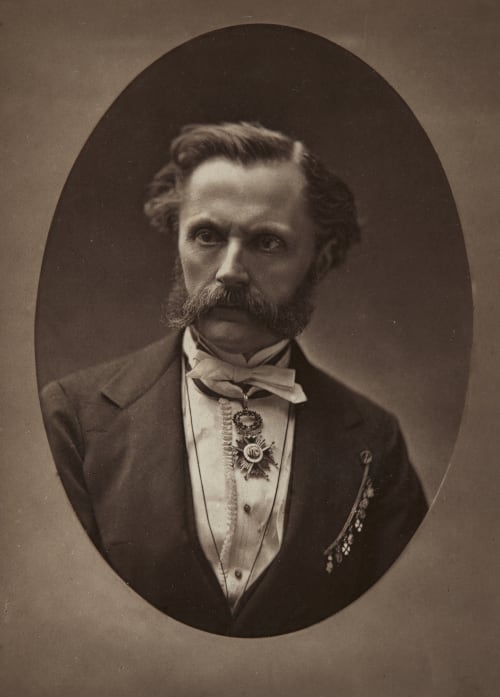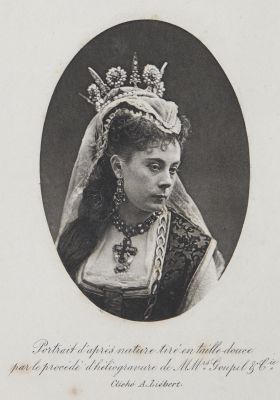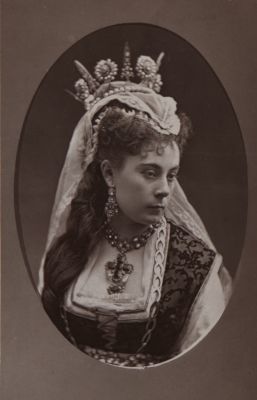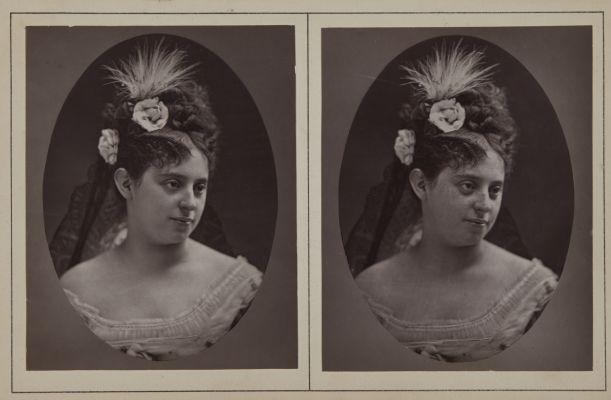
Title
Portrait de L’AuteurArtist
Liebert, Alphonse J. (French, 1827-1913)Publication
Le Photographie en Amérique. Traité‚ complete de photographie pratique contenant les découvertes les plus récentesDate
1874Process
WoodburytypeAtelier
Goupil & CieImage Size
13 x 9.5 cm
Frontis from Alphonse J. Liébert – Le Photographie en Amérique. Traité‚ complete de photographie pratique contenant les découvertes les plus récentes, 1874 Tiré à 2000 Exemplaires par le procédé Woodbury, d’après un cliché de M. A. Liébert. printed by M.M. Goupil & Cie, Asnieres. In 1867, Goupil bought from Walter Woodbury an exclusive license for the exploitation in France of the Woodburytype process.
Alphonse Liébert was an officer in the French navy in the 1840s, when he resigned to pursue his interest in photography. In 1851, while commanding a ship off the California coast, he received papers incorrectly identifying him as an American. He settled in Nevada City, California, and opened a daguerreotype portrait studio in 1857. The studio proved successful, as did Liébert’s submission of his pictures to local exhibitions and competitions beginning in 1860. They won prizes as well as critical praise, and he closed his studio in 1862 in order to fill a commission from a European periodical for a series of California views. The next year, he returned to France and opened a studio in Paris specializing in tintypes. Between 1867 and 1876 he wrote about photography, produced a book on American photographic practices, and exhibited his work regularly at international expositions. In addition to his roles as practitioner of and authority upon photography, Liébert was an innovator of photographic techniques. He invented an enlarging device that needed no reflector (1863), was the first to open a studio equipped with electric light in Paris (1879), and patented a technique for mechanically and uniformly applying an unlimited number of liquid dyes onto a print. Liébert is best known for his photographs made during the time of the Paris Commune, which illustrated Alfred d’Aunay’s 1872 work Les Ruines de Paris et de Ses Environs, published in two volumes and containing one hundred albumen silver prints. These pictures contain especially accomplished images of the felling of the Vendôme column. They are among the most thorough and impressive documents of Paris during the period of the Third Republic. [1]
References
[1] Lisa Hostetler, Handy et al. Reflections in a Glass Eye: Works from the International Center of Photography Collection, New York: Bulfinch Press in association with the International Center of Photography, 1999, p. 221. ICP https://www.icp.org/browse/archive/constituents/alphonse-j-li%C3%A9bert?all/all/all/all/0


